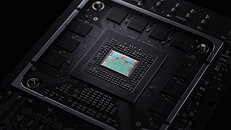Tuesday, June 30th 2020

Microsoft Rumored To Release Budget Xbox Series S Console
In a recent report by the Verge, Microsoft is reportedly planning a budget console to go along with the Xbox Series X known as the Xbox Series S. The Xbox Series S will be a successor to the popular Xbox One S, codenamed Lockhart it's set to feature the key next-generation improvements found in the Xbox Series X and provide them at a lower price point.
Sources say that the Xbox Series S will target 1080p 60FPS and 1440p 6̶0̶F̶P̶S̶ 30FPS gaming performance, this will be achieved with roughly 1/3rd of the GPU power at 4 TeraFLOPs, and 10 GB of GDDR6 RAM. The Xbox Series S console is rumored to share the same 7 nm AMD Zen 2 SoC a̶t̶ ̶a̶ ̶l̶o̶w̶e̶r̶ ̶c̶l̶o̶c̶k̶ and the same ultra-fast PCIe 4.0 SSD. The console may not feature a disc drive like the Xbox One S All Digital Edition. Microsoft is yet to publicly say anything about the console, so take these rumors with a grain of salt.
Update Jun 30th: Sources tell Eurogamer that Microsoft is planning to unveil the console at an event in August.
Sources:
The Verge, @tomwarren, Eurogamer
Sources say that the Xbox Series S will target 1080p 60FPS and 1440p 6̶0̶F̶P̶S̶ 30FPS gaming performance, this will be achieved with roughly 1/3rd of the GPU power at 4 TeraFLOPs, and 10 GB of GDDR6 RAM. The Xbox Series S console is rumored to share the same 7 nm AMD Zen 2 SoC a̶t̶ ̶a̶ ̶l̶o̶w̶e̶r̶ ̶c̶l̶o̶c̶k̶ and the same ultra-fast PCIe 4.0 SSD. The console may not feature a disc drive like the Xbox One S All Digital Edition. Microsoft is yet to publicly say anything about the console, so take these rumors with a grain of salt.
Update Jun 30th: Sources tell Eurogamer that Microsoft is planning to unveil the console at an event in August.


57 Comments on Microsoft Rumored To Release Budget Xbox Series S Console
My bet is in the beginning it will be harvested defective Series X dies, and once the 7 nm fab defect rate drops, they'll have a custom chip to go along with a fab shrink. Best of both worlds and in the beginning you're just managing one chip run.